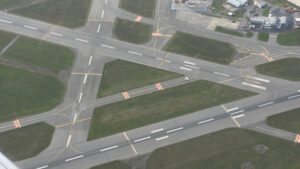The Importance of TAWS in Deteriorating Aviation Weather
As a pilot, you know how crucial it is to take every necessary precaution to ensure the safety of your passengers, crew, and flight. One significant risk that pilots face during a flight is controlled flight into terrain (CFIT) accidents, especially during deteriorating aviation weather. These accidents occur when an aircraft collides with terrain, obstacles, or water without the pilot’s awareness. CFIT accidents are responsible for a large percentage of all aviation fatalities, and they can happen to even the most experienced pilots. However, these accidents are preventable, and one of the most effective ways to do so is by utilizing a terrain avoidance and warning system (TAWS).
Although TAWS has been drastically successful in decreasing CFIT accidents since the 1970s, pilots have begun to use their own judgement when it comes to disabling potentially dangerous warnings. Unfortunately, this is putting them and their passengers at risk. The FAA states that these occurrences are on the rise because of inappropriate times during VFR conditions with changing aviation weather where people turn off warning systems because they think they know better. However, pilots do not always acknowledge that misreading charts or unfamiliarity with approaches can be a factor as well. For ultimate safety measures one should keep TAWS operational despite annoying alert durations; after all being alive outweighs any nuisance!
CFIT Accidents Rising
CFIT accidents are once again on the rise, and the FAA says it’s because pilots are inhibiting our TAWS at inappropriate times. Here are some reasons why it is critical for pilots to keep their TAWS equipment turned on to avoid often deadly CFIT accidents.
TAWS: An Overview
- TAWS provides pilots with an early warning system that alerts them to potential terrain-related dangers in their path of flight.
- The system works by using GPS data, ground proximity sensors, and other tools to determine the aircraft’s position and provide pilots with alerts when they approach potentially hazardous terrain.
Benefits of TAWS
- Early Warning System: TAWS provides an early warning to pilots, giving them sufficient time and information to make adjustments accordingly, preventing accidents caused by CFIT.
- Enhanced Safety: Keeping TAWS turned on enhances aviation safety by enabling pilots to reach their destination safely. This system prevents unnecessary accidents and allows pilots to have more confidence in their flight performance.
- Required by Regulations: TAWS is a requirement in many countries, making it mandatory for pilots to turn on TAWS so that they can adhere to aviation regulations.
- Reduced Liability: Proper utilization of TAWS would reduce the airline’s liability in the event of an accident.
Keeping the TAWS operational at all times is key for keeping air travel safe and reducing liability. Despite warnings being slightly annoying, it’s much better than dealing with a CFIT accident – something that can even happen to experienced pilots who incorrectly read approach charts or are unfamiliar with the terrain. With this in mind, let’s keep our skies happy and healthy by taking proactive measures like utilizing TAWS whenever possible.










